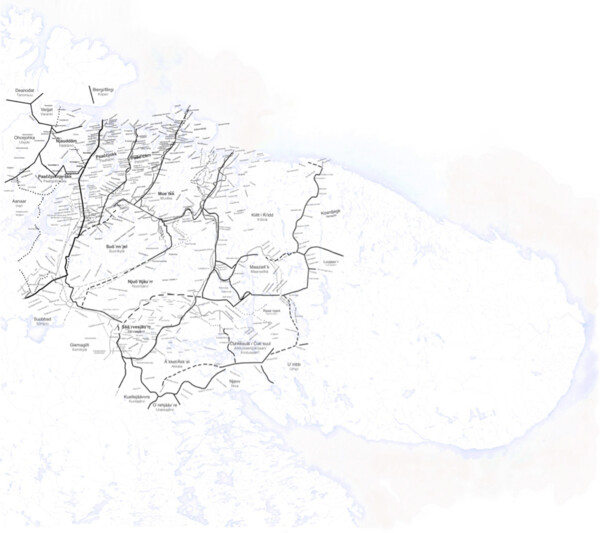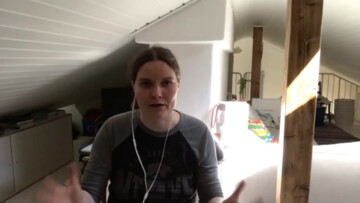Ruåttvuõttâd (to make or become kin in the language Skolt Sámi) could be one of the oldest forms of socialising: making peaceful relations and alliances to avoid the need to destroy the other by finding a common relative, a connection between you and I. Ruåttvuõttâd between people, and between people and all the living kinds. A culture that is still in transition from oral to… – Digital? Academic? Bureaucratic? – has faced almost insurmountable hardships in making kin with the other bureaucracies, governmental and industrial entities, and therefore withdrawing from the noise that cannot be avoided, focusing on nurturing relations and alliances with other territories.
“We come in peace, collaborating in coexistence and actively renewing alliances” reflects the commitment to non-violent intentions when meeting new entities, when returning to family territories, when meeting with relatives, ruått. A quote from Sheridan and Longboat has stayed with me for almost two decades, which I first came across when meeting the Snow change co-operative and taking the very first steps to become a territorial guardian again:
Onkwehonwe (unassimilated, traditional Haudenosaunee)...regard any assumption concerning the existence of autonomous, anthropogenic minds to be aberrations that violate the unity, interrelation, and reciprocity between language and psychology, landscape and mind. The ecology of traditional Haudenosaunee territory possesses sentience that is manifest in the consciousness of that territory, and that same consciousness is formalised in and as Haudenosaunee consciousness...Onkwehonwe mind everything because everything minds Onkwehonwe. Haudenosaunee minds are composed not just of visible → ecological domains but also by the numinous qualities of those domains that, allowed to mature, express the fullness of traditional territory. Old-growth minds and cultures mature, emerge, and encompass the old growth of their traditional territory.[1]
Old-growth culture is where I was born, an old-growth that has undergone clear-cuts and open-pit mining, and it is my duty to plant the seeds for old-growth territories to return, in a full sense.
Traditionally, in the Skolt Sámi world there has been a relationship between the ancestral → territory, which could have been used by the same kin for hundreds and hundreds of years, and the alliances among places, animals, and families, which were renewed in cyclic order. A myriad of different practises, policies, and systems directed how the alliances between the families, animals and places were governed and managed, with a living understanding how these unwritten, physical conventions that have lasted for millennia are manifested, such as in the place names our ancestors left behind, covering the whole area of our cultural inhabitance, as introduced, very briefly, below.
We have started to re-establish traditional water management practices with regard to the River Njâuddam as a climate change adaptation strategy.
Over the past nine years our team, consisting of reindeer herders, fishermen, scientists, and artists, has gathered traditional knowledge and observations on how the land is changing along with the climate. Combined with weather diaries, catch diaries, interviews, temperature diaries and measurements of the heavy metals in water, we have focused on observations of the introduction of foreign species to the area, analysing the status of known spawning sites and place names as a source of valuable information.
Special attention has been paid to site-specific macro-vocabularies and traditional legal practices on the river. Based on the observations and analytical work, from the perspectives of both traditional and scientific knowledge, the first physical watershed restorations began four years ago.
We are currently restoring the watershed areas where in the past certain forms of land use – such as logging and burning the land, manmade water flow alterations and the construction of roads and bridges – has led to the loss of spawning sites for salmon, trout and other species. By reintroducing old spawning sites, we are giving the salmon and its relatives more possibilities for survival, even with extreme heat waves.
We can only undo the manmade damage. The river needs to find her own way to cope with changing climate, and we must not interfere with this extremely demanding process.

Map (test version 2019) by Stina Aletta Aikio, Pauliina Feodoroff, Kaisu Mustonen, Tero Mustonen, Jelena Porsanger, Hilkka Semenoff and Jorma Mattsson.


![Subjectivisation 2 [Final discussion]](/website/var/tmp/image-thumbnails/0/1478/thumb__logo/Mick-final-discussion.png)
